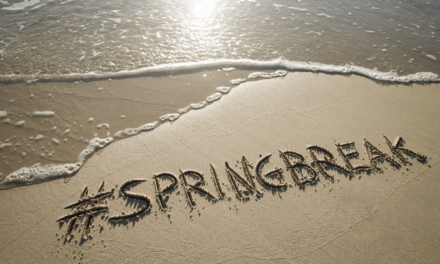Abigail Yarrison ’24, Editor in Chief
On February 27th, the U.S. Coast Guard spotted it. A humpback whale floating, dead, amid the waves, south of the Ambrose shipping channel between New York and New Jersey. This humpback is one of 23 whales that have washed ashore on the beaches of New York and New Jersey since January 2023. This surge in whale deaths began in 2016, but has risen due to recent factors. The National Oceanic and Atmospheric Administration (NOAA) has called this an unusual mortality event (UME) involving whales.
A UME is defined by the NOAA as “a stranding that is unexpected; involves a significant die-off of any marine mammal population; and demands immediate response.” Cetaceans, that is whales, dolphins, and porpoises, have accounted for 55% of UME’s from 1991-2021. Additionally, Humpback whales, North Atlantic right whales, and Gray whales are all currently experiencing active UME’s. Since January, 16 humpbacks have come ashore along with right whales and a minke whale in February. Scientists, environmentalists, and officials are worried by the increase in stranded whales over such a short period.
Examinations of the whales done by scientists onshore have found that 40% of them died from a boat strike. As the ocean warms, whales and their prey migrate and feed in different locations, often closer to shore where is there is a higher chance of human interaction. Vessel strikes and entanglement in fishing gear can be fatal for whales. Happening simultaneously with their migration nearer to shore has been a consumer increase across the world. After the 2020 COVID-19 pandemic, online shopping grew in popularity leading to a surge in the massive cargo ships navigating the same waters as the whales, and thus collisions.
The cause of death for the other 60% of beached whales is still under study, however many people blame the recent New Jersey offshore wind power industry. Wind energy has been a leading sustainable alternative to fossil fuels, and now states on the east coast are moving wind power into the ocean. Wind turbines miles off the coast of New Jersey, Delaware, Virginia, and Rhode Island, just to name a few, could supply nearly half of the east coast’s current electricity generation.

The supposed problem comes from wind energy survey vessels which map the ocean floor using sonar equipment. Activists argue that the noise could be a contributor to whale deaths. The sounds could cause them to become disoriented, making it harder to get out of the way of passing boats. The New Jersey state Department of Environmental Protection and the NOAA stated in March that at this time there is no scientific reason to conclude that the offshore wind projects are related to whale deaths. However, 30 Jersey Shore mayors wrote to NJ Gov. Phil Murphy calling for a moratorium, or temporary prohibition, on offshore wind energy activity until more studies can be done.
On April 19th, the Offshore Wind Research & Monitoring Initiative (RMI) announced $2 million in funding to put towards research on the potential marine impacts of the offshore wind energy initiative. However, their funding comes with no pause to current offshore wind power activity. Governor Murphy states that because there is no concrete evidence towards offshore wind sonar scans causing whale deaths, there is no reason to postpone the activities.
Sources
Fazelpoor, Matthew. “$2M to fund additional offshore wind studies amid calls to pause, marine deaths.” NJBIZ. 20 April 2023. https://njbiz.com/2m-to-fund-additional-offshore-wind-studies-amid-calls-to-pause-marine-deaths/.
Nieto-Munoz, Sophie. “Ahead of GOP hearing, N.J. stresses no link between offshore wind and whale deaths.” New Jersey Monitor. 16 March 2023. https://newjerseymonitor.com/2023/03/16/ahead-of-gop-hearing-n-j-stresses-no-link-between-offshore-wind-and-whale-deaths/.
Office of Protected Resources. “Marine Mammal Unusual Mortality Events.” NOAA Fisheries. 5 January 2023. https://www.fisheries.noaa.gov/national/marine-mammal-protection/marine-mammal-unusual-mortality-events.
Office of Protect Resources. “Active and Closed Unusual Mortality Events.” NOAA Fisheries. 17 January 2023. https://www.fisheries.noaa.gov/national/marine-life-distress/active-and-closed-unusual-mortality-events#active-umes.
“Offshore Wind State by State Analysis.” OCEANA. 2023. https://usa.oceana.org/offshore-wind-state-state-analysis/.
Tully, Tracey. “Why 23 Dead Whales Have Washed Up on the East Coast Since December.” The New York Times. 28 February 2023. https://www.nytimes.com/2023/02/28/nyregion/east-coast-whale-deaths.html.





